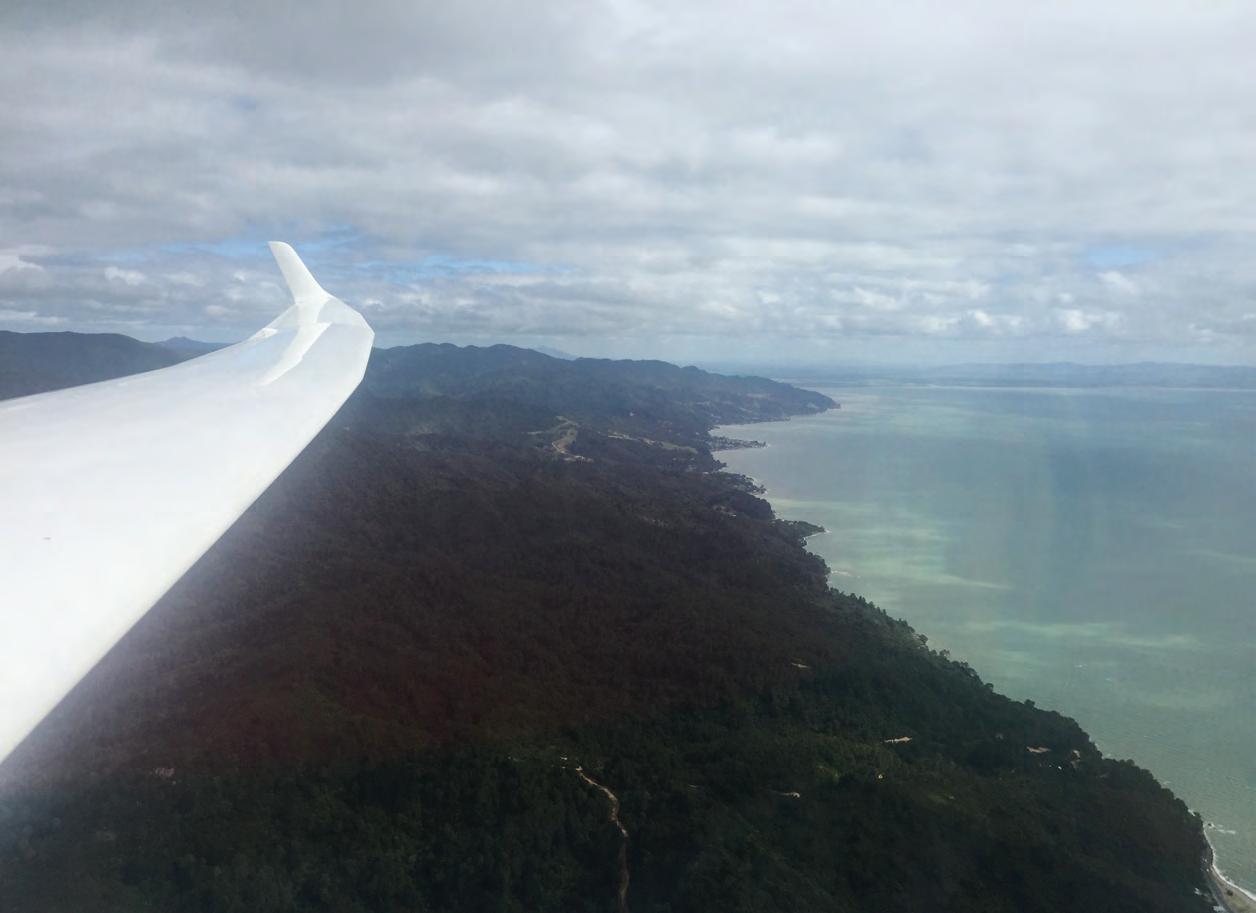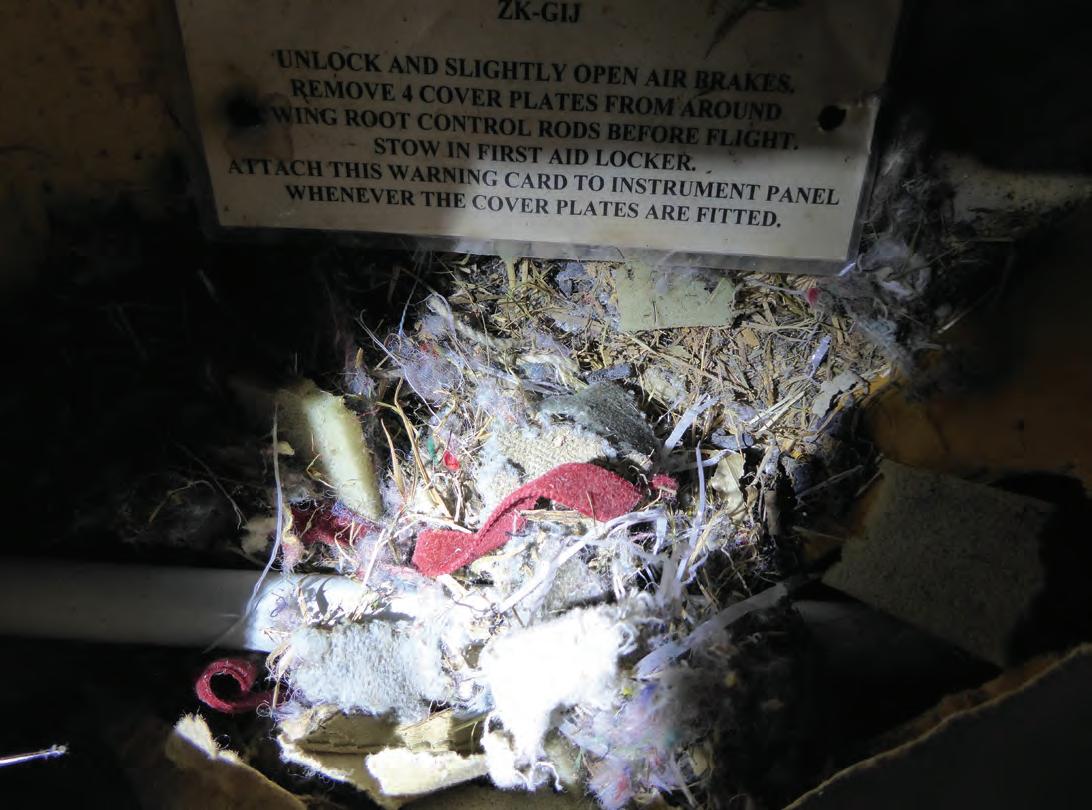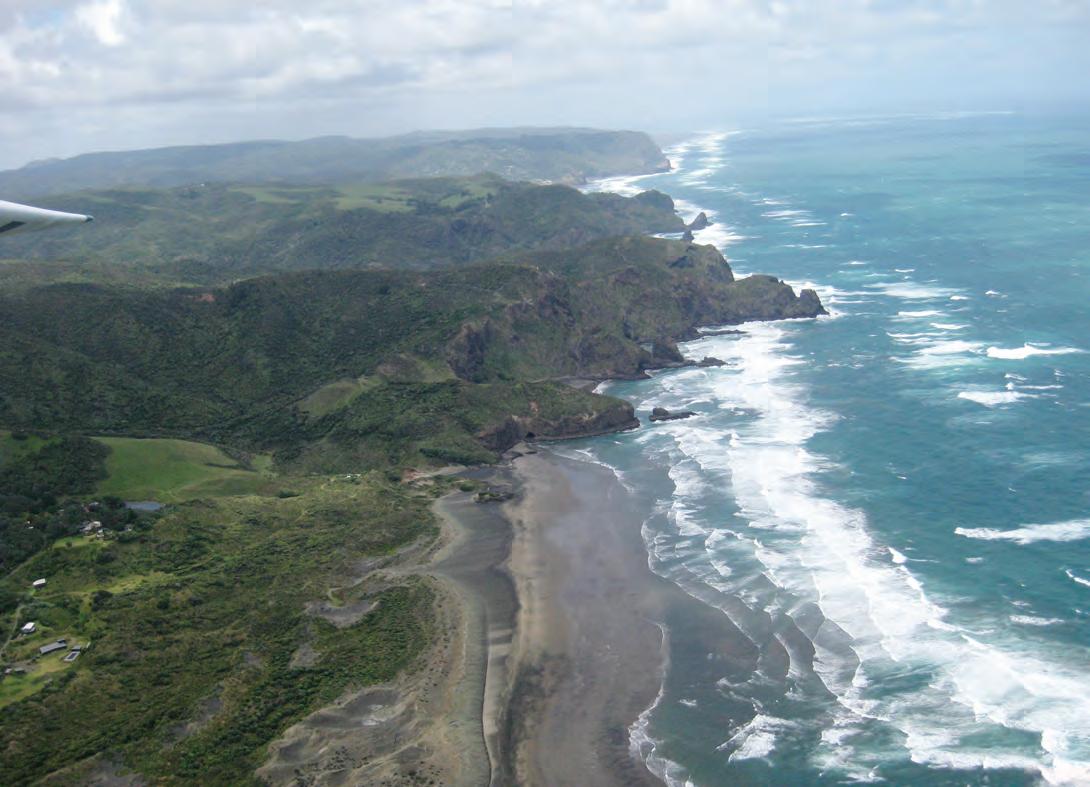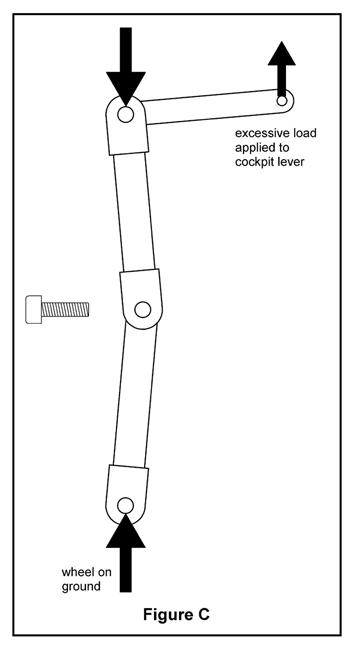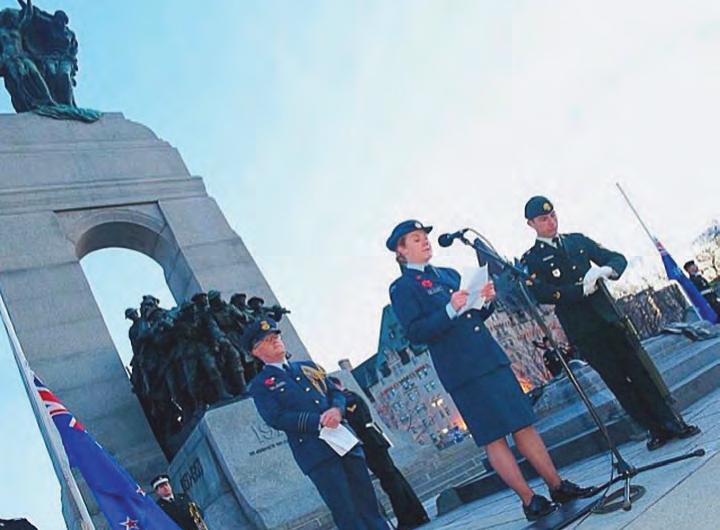
9 minute read
Youth Glide. Where Are They?
from SoaringNZ Issue 48
by mccawmedia
We continue our series on Youth Glide Alumni with two young people following very different careers. Toni Thompson, originally from the South Canterbury Gliding Club may be in the Air Force but she doesn’t think we’ll be interested in her because she doesn’t have a flying job. She doesn’t seem to realise just what a wonderful young woman and role model she is. Adam Priest, (ex-Tauranga Gliding Club and actually pre Youth Glide) on the other hand has had a number of very exciting flying jobs.
Toni's Story
Advertisement
Since I was six years old, my father took me to nearly every War Birds Over Wanaka Airshow there was. On one occasion, there was an RAAF F-111 Aardvark doing a display. My interest in aviation began after hearing over the loud speakers that a woman was in the cockpit.
I had no idea what gliding was until 2011. My PE teacher at the time knew I had an interest in aviation and advised me to apply for the South Canterbury Gliding Club Scholarship. I received $500 from the club to start gliding.
Shortly after I received the scholarship, I attended the Youth Soaring Development Camp at Omarama. I still had little knowledge of how gliders stayed in the air, and was the only member of the South Canterbury club to attend. Clueless and alone, I set up my little tent outside the campground kitchen. After only a few days at the camp I had made lifetime friends and had some amazing experiences.
On my first flight at the camp my instructor introduced me to aerobatics. That was the moment I knew that this was going to be a hobby that I would continue and I attended another two camps after that. I have had some amazing flights in Omarama. On my favourite flight to date we saw climbers making their way to the summit of Mt Cook. I am now a member of the Aviation Sports Club at Whenuapai, working on getting my QGP.
I am currently in the RNZAF working in the Mission Support Squadron as an Analyst. I have been doing this for three years and have really enjoyed my experience in the Air Force thus far. Although
Toni Thompson
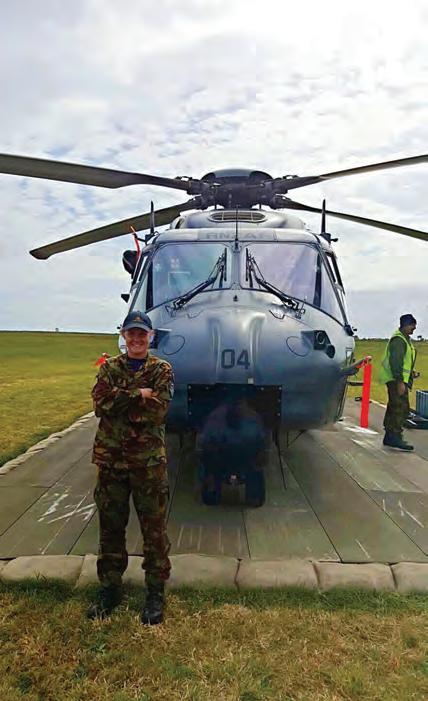
my position is not in direct line with flying, I have flown on all of the RNZAF’s platforms and been involved on a number of rewarding missions. Recently I was involved in a search and rescue in the P-3 Orion where we found two fishermen lost to the north of Tonga.
I have been lucky enough to travel with the RNZAF. I’ve been around New Zealand, over to Canada and Australia. I am looking forward to more upcoming trips this year. My career goal is to move into an aircrew position within the RNZAF.
For once I am glad I listened to my school teacher as I have met such a great bunch of people. Attending the camps gave me valuable and enjoyable life experiences and it has also helped me on my journey into the RNZAF. Although I am making slow progress through the syllabus due to work commitments, I am still gliding when I can and still intend to tick off the goal of gaining my QGP.
Adam’s Story
I had a keen interest in aviation growing up and my first introduction to flying was a night school offered by the Tauranga Gliding Club. It was run over eight weeks, one night per week and a training flight during the weekend at the club. Youth Glide did not exist at this stage but this night school programme was a great introduction as I was 14 at the time and it worked in well with high school.
I continued my gliding with the Tauranga Gliding Club after the night school course was completed. I was taken under the wing of many of the guys at the club – Roy Edwards, Gordon Scholes, Roger Peters and the late Brian Chesterman as well as others. I enjoyed spending my spare time there, often traveling across to Matamata when the competitions were on.
In 2004 I finished school and started towards my Commercial Pilots Licence. With that I got my type rating on the Piper Cub and soon had my tow rating completed with Gordon. My weekends and Wednesday afternoons were spent towing gliders. I also worked for a local charter company, which meant I was on the airfield most days. I would often get a phone call during the week to see if I was free for a quick tow when conditions were looking favourable during the club’s non-flying days.
Adam in the cockpit of the A320
Towards the end of 2006 I was getting itchy feet and started looking abroad for flying jobs. With limited experience, it looked like I would be going ‘bush’. With my brain ticking over the options it came down to either Botswana or Papua New Guinea. In late January of 2007 I landed in Port Moresby, PNG. It is difficult to obtain a job before arriving in either of these two countries so I had arranged to stay with a friend so that I could go door knocking with my CV in hand. Gareth,
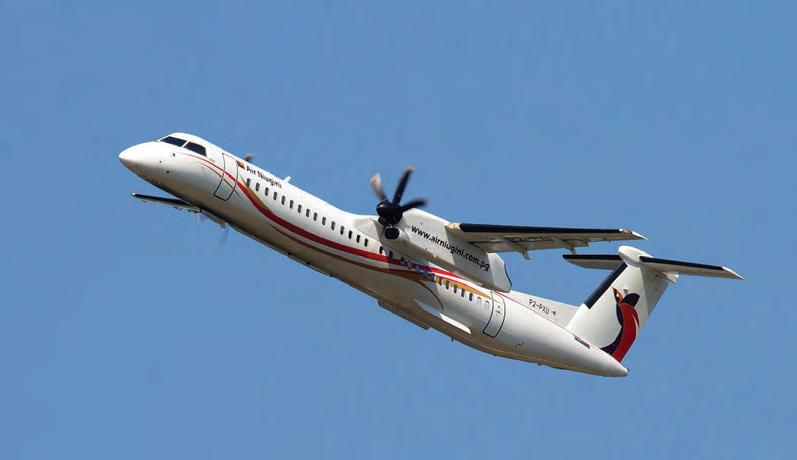
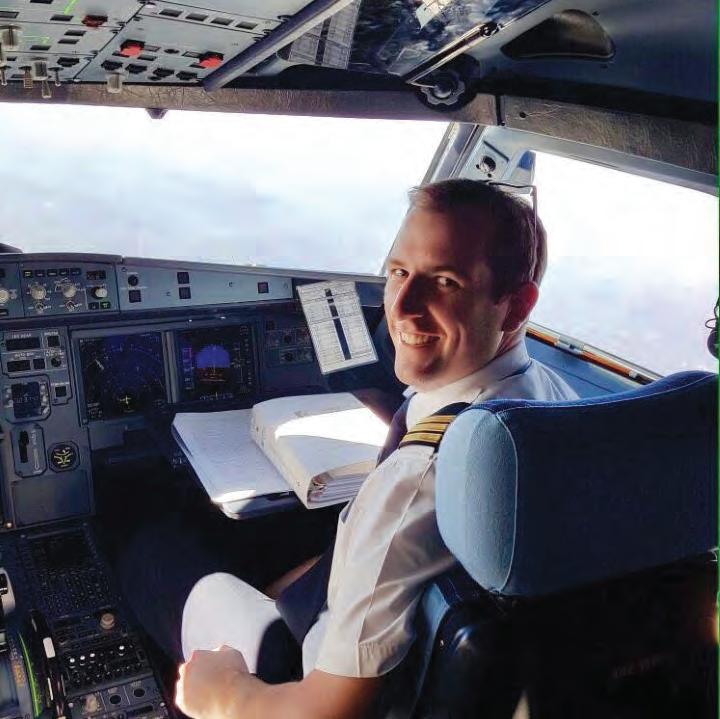
the friend who I was staying with, was out flying one of the bank runs in the Cessna 402 when I arrived. He had given me instructions to hang a left once outside of the International terminal and walk up the road until I saw the Tropicair office where a couple of the lads would be expecting my arrival. This was the most nerve-racking 700 metres I had ever walked. I was 20 years old with my entire possessions in my backpack, in Port Moresby, one of the ‘most dangerous’ cities in the world.
I ended up securing a job with Tropicair within my first week in Port Moresby. Tropicair operated three Cessna Caravans and had their first King Air on the way from the USA. Our main regions of operation in the Caravans were in the Gulf to the west of Port Moresby, across the Owen Stanley ranges to New Britain and shorter flights to Kokoda and Tapini. Then there were ad-hoc charters throughout PNG. The King Air was used for a variety of jobs, from executive charter, SAR, medivac, mining crew changes, moving gold bars out of the mines and the bank runs – money transfers for the banks.
One morning during November 2007 I was at home in our compound when the
Youth Glide continued WHERE ARE THEY?
phone rang. It was our General Manager, Chris Tewson. ‘Adam’ Chris said, ‘what does 7500 mean?’
‘NO!?!?!’ I said.
Jacksons ATC had called the office to say they had lost contact with the King Air and the last contact they had showed it heading towards Fishermans Island while squawking 7500 to indicate a hijacking. I jumped in the ute and raced through Port Moresby to the airport. On arrival, I had a quick rundown with Chris before beginning an aerial search in one of the Cessna Caravans. Fishermans Island was not far from Port Moresby and I soon had the King Air in sight, sitting there on the old disused WWII airstrip. The cabin door was open and I could see from overhead that the left propeller had struck one of the ant hills and was bent out of shape. But there was no sight of the pilot or passengers. The aircraft had departed Port Moresby on a bank run to the west for Kiunga and Tabubil. Along with the five million Kina (about NZ$2.2 million) was one policeman for security and one staff member from the bank to handle the paperwork. Both the passengers were well known to us as they often came along on these runs. But the policeman had decided today was the day and he had put together a plan to steal the money on board. He had two banana boats waiting for their arrival at Fishermans Island. Soon after take off, passing about 5000 feet, he pulled his pistol on the pilot and told him to turn around for Fishermans Island. Jimbo, the unlucky pilot that day, and the other passenger were used to help carry the boxes of money from the aircraft to the waiting banana boats and then ordered aboard. Once on the mainland and with the money loaded into a waiting van, Jimbo was left at the shoreline, handcuffed to the mangroves.
Here the plan fell apart for the policeman. They had made landfall at Napa Napa, a peninsula outside of Port Moresby. With the alarm being raised in Port Moresby, the not so corrupt police had secured the only road out from Napa Napa. A shootout occurred and the hijacker was shot dead. The money was recovered and Jimbo later found by a helicopter. He was brought back to base, a little shaken but otherwise fine.
Towards the end of 2009 I was asked to take the role of Chief Pilot for Tropicair, which saw me through to the end of 2010 and my time with them. My final highlight with the company was delivering another new King Air from the USA to Port Moresby. It was a four day trip from Camarillo on the east coast of California, to Hawaii, the Marshall Islands, Solomon Islands, Cairns and then up to Port Moresby.

A traditional welcoming ceremony for VIPs being flown into Emirau Island in the Bismarck Archipelag, Papua new Guinea.

The 10 hour 35 minute flight to Honolulu got a little tight when the headwind jumped from the forecast 20 knots to 75 knots. We found ourselves with not enough fuel to return to California and too much headwind to make Hawaii. We pressed on as we didn’t have any other options and eventually the wind died down again and swung around to a tail wind for our arrival into Hawaii. 2011 saw me moving across to Air Niugini, flying the Dash 8. For two years I flew the 100, 200 and 300 series and then moved across to the Q400 series in 2013. I relocated to Cairns for the new job which provided a great work-life balance. I still had the adventure of working in PNG, but I was now in the airline environment, and a little bit closer to home.
Air Niugini took on a restructure at the start of 2015, which was not so attractive for a long-term career and it was time to look abroad once again. In June 2015 I arrived in Macau, a country of 30.5 km2. Air Macau operated a fleet of Airbus A319, A320 and A321s. The company network throughout Asia had us bringing in mostly gamblers and tourists to Macau, which is known as the Las Vegas of Asia. 70% of the flights would take us into Mainland China and the remainder had us going to Japan, South Korea, Taiwan, Vietnam and Thailand.
In July 2016 I interviewed with Air New Zealand and from this I was offered a job. I moved back home in October last year and am now flying the A320.
It has been a great career so far and it started off with the night classes run by the Tauranga Gliding Club. Now I’m back in New Zealand flying domestic and short haul international routes, the future is looking enjoyable too. Hopefully I’ll be back in a tow plane and glider by next summer.


